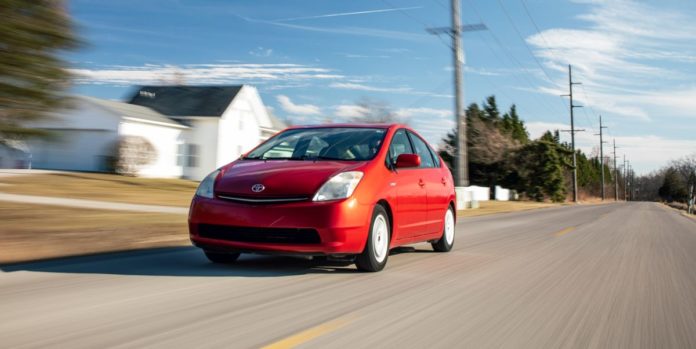- NHTSA has opened an investigation to determine whether EVs and hybrids dating back to 1997 should be required to emit the same audible pedestrian warning sounds that their more recent counterparts have.
- The federal safety agency previously passed Federal Motor Vehicle Safety Standard (FMVSS) 141, which requires that all 2020 model year and newer electric and hybrid vehicles under 10,000 pounds be equipped with a pedestrian warning sound.
- If NHTSA decides to pass a new requirement for older models, it could pose a logistical challenge, since an estimated 9.1 million vehicles could be on the list to be recalled for a retrofitted pedestrian warning.
Among the ways in which they’re different from traditional internal-combustion-engined vehicles, electric cars and hybrids don’t sound the same. They are quiet—and that can pose a safety problem. There has been a law on the books for several years requiring new EVs and hybrids to be sold with a pedestrian warning sound onboard. Now the National Highway Traffic Safety Administration (NHTSA) has opened a new investigation to determine if EVs and hybrids dating back to 1997 should be required to possess the same audible warning sounds that newer vehicles do.
The investigation is credited as starting from a petition from an individual, filed in July 2022. The complaining citizen asks for the new requirement and cites as backup that 2018 law (FMVSS 141) requiring EVs and hybrids under 10,000 pounds to be equipped with a pedestrian warning sound. The petition asserts that it’s wrong for hybrid and electric vehicles built earlier not to have to meet the same standard as the vehicles built later.
The law was created as a protection for visually impaired and blind people who depend on auditory cues when crossing streets. NHTSA documents note that this concern dates back at least as far as 2010, with the Pedestrian Safety Enhancement Act of 2010, which became law in January 2011.
NHTSA estimates that there are more than nine million hybrid and electric vehicles that don’t have built-in audible alerts; all of them could conceivably be subject to a retrofit rule, which is likely to pose logistical challenges both to automakers and the owners of the older vehicles.
Take the Takata airbag recall, where nearly 70 million airbags were required to be replaced for safety reasons. Honda and other automakers have spent years hunting down owners of older models to bring their vehicles in for new airbags. The logistical lift needed to track down each of more than nine million owners of hybrids and EVs dating back 26 years could be complicated and ultimately fall short of total completion. NHTSA declined to comment as the investigation is in progress.
This content is imported from poll. You may be able to find the same content in another format, or you may be able to find more information, at their web site.
Associate News Editor
Jack Fitzgerald’s love for cars stems from his as yet unshakable addiction to Formula 1.
After a brief stint as a detailer for a local dealership group in college, he knew he needed a more permanent way to drive all the new cars he couldn’t afford and decided to pursue a career in auto writing. By hounding his college professors at the University of Wisconsin-Milwaukee, he was able to travel Wisconsin seeking out stories in the auto world before landing his dream job at Car and Driver. His new goal is to delay the inevitable demise of his 2010 Volkswagen Golf.

